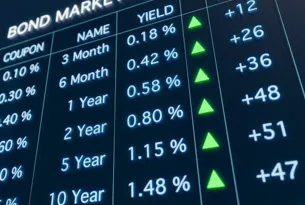The company should benefit from a recovering market for the underlying commodity and too-aggressive estimate slashing by Wall Street analysts, writes MoneyShow’s Jim Jubak, also of Jubak’s Picks.
In my April 2 post on the great first quarter turned in by cyclical stocks—and the lousy March—I said that in general I don’t see much to tempt me into putting money into cyclical stocks before first-quarter earnings season (which starts on April 10). And before we get some resolution of big macroeconomic questions on growth from Europe and China.
In general.
But I also said that I’d make an exception for fertilizer producer Potash of Saskatchewan (POT), and I promised to explain why.
Part of the reason is the March 30 report on corn plantings from the US Department of Agriculture, which projected a 4% increase in acreage planted this year from the 2011 level.
A second report on corn stock inventory showed inventory on March 1 of just 6.01 billion bushels, down 8% from the March 1, 2011 inventory levels. The corn stocks level of 6.01 billion bushels was below the consensus of 6.15 billion bushels.
The two reports add up to more planting—which means more seed and fertilizer and pesticides purchased by farmers—and to higher prices as stocks fall before the actual harvest.
But part of the reason is specific to potash. Potash prices were soft for much of the first quarter, but recent news of contract settlements with Chinese buyers has stabilized prices.
Potash (the company) reported a particularly weak—but not unexpectedly so—fourth quarter of 2011, with especially low potash volumes in North America. The company guided first-quarter 2012 earnings to 55 cents to 75 cents a share, against the consensus estimate then of 83 cents.
Analysts have been busy cutting their estimates ever since, from $1 a share 90 days ago to 69 cents a share now. I think, given firming prices, that sets Potash up for a potential surprise on first-quarter earnings.
Revenue and earnings for Potash dance to a different calendar than most cyclicals. Demand is set by planting season—which means that the highest demand is typically in April and May when farmers order so that they can apply fertilizer to their fields
With distributors holding off on ordering so that they can run down inventories and lower their exposure to the risk that farmers won’t buy this spring, the big spike in demand will come this year not in April or May, but in the second half of the year, when distributors have to restock.
I think that will give Wall Street time to discover this story and to anticipate higher earnings. Which should, of course, drive the share price higher.
At the current price of $45.56 a share, Potash of Saskatchewan is trading closer to its 52-week low of $38.42 than its 52-week high of $62.
As of April 4, I’m adding shares of Potash of Saskatchewan to my Jubak’s Picks portfolio, with a target price of $58 a share by March 2013.
Full disclosure: I don’t own shares of any of the companies mentioned in this post in my personal portfolio. The mutual fund I manage, Jubak Global Equity Fund, may or may not now own positions in any stock mentioned in this post. The fund did own shares of Polypore International as of the end of September. For a full list of the stocks in the fund as of the end of September see the fund’s portfolio here.




































